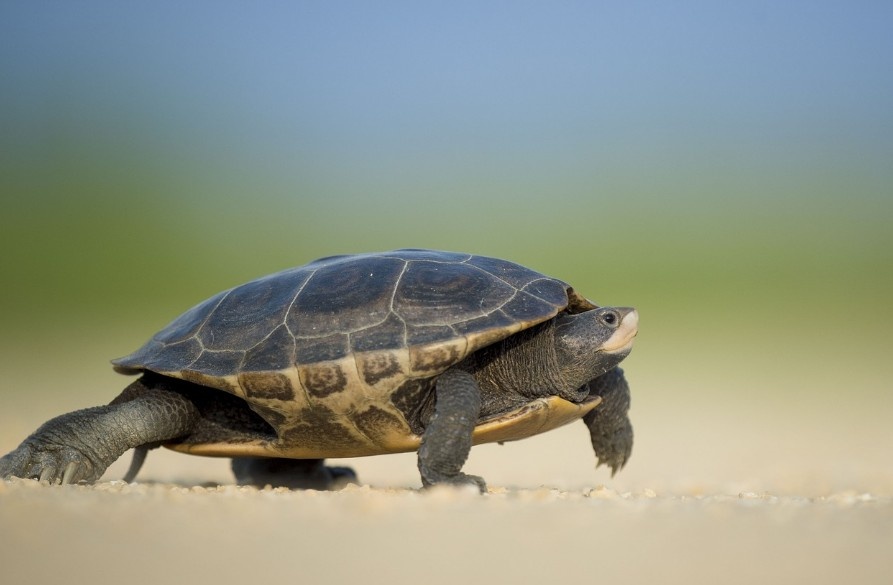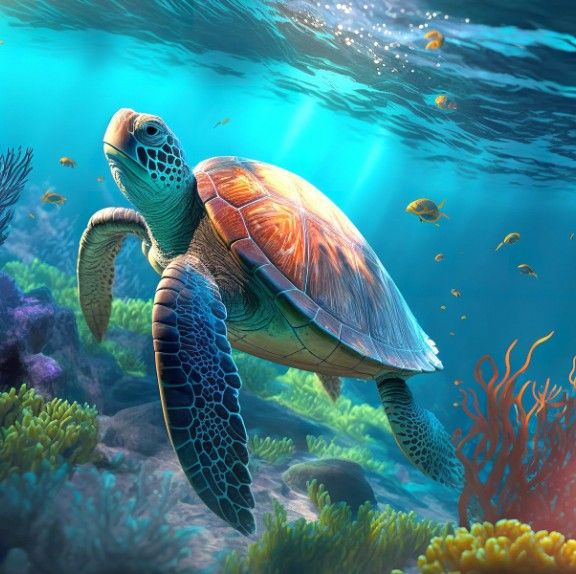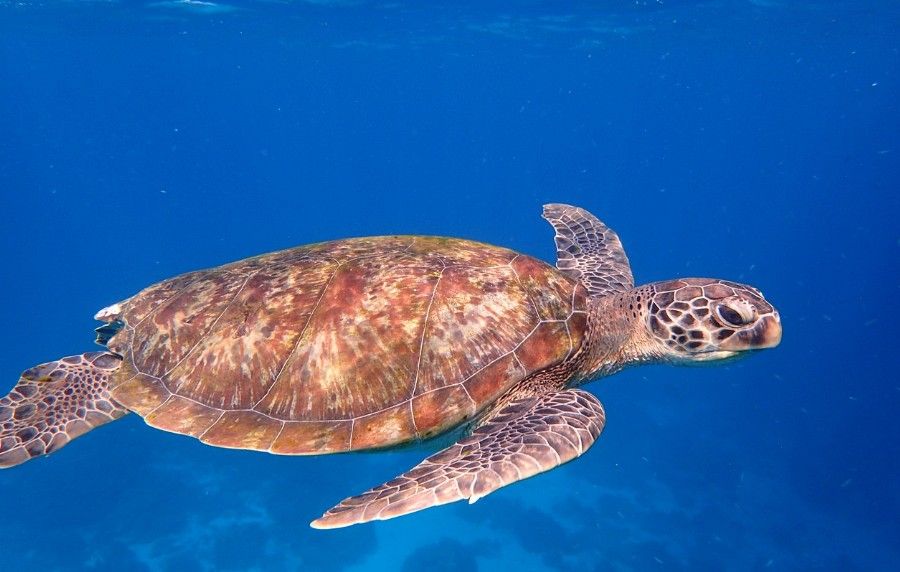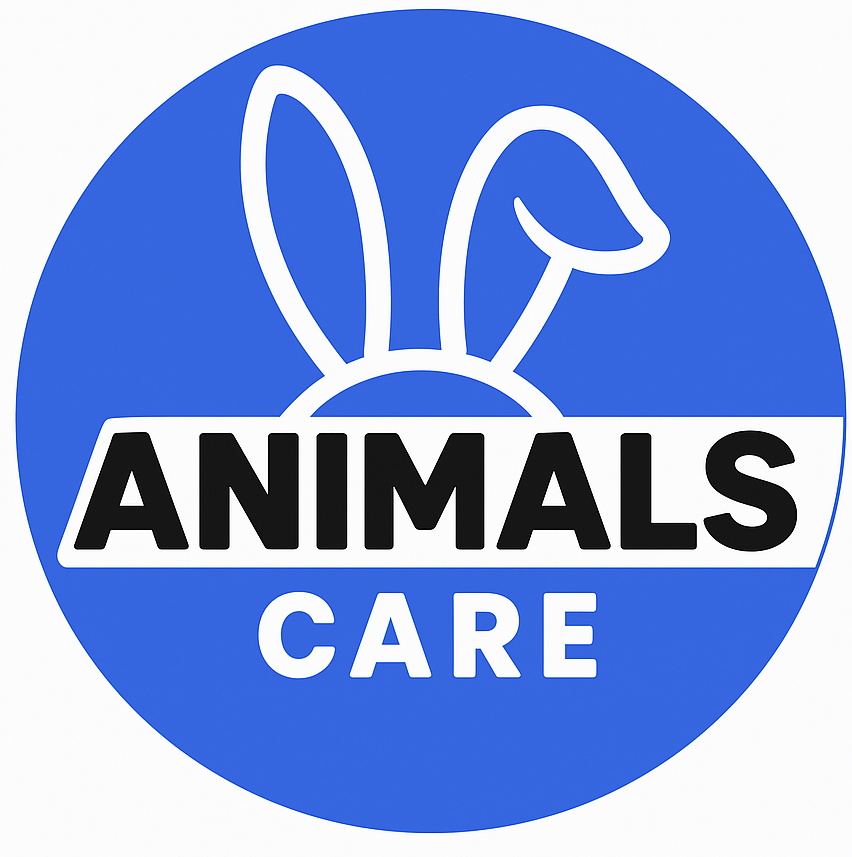The Ultimate Guide to Turtle Diets: What do Turtles Eat and How to Care for Them
What do turtles eat? Turtles are really fascinating creatures that have captured the hearts of many pet owners and nature enthusiasts. Knowing what turtles eat is essential for ensuring that they remain healthy and happy. Their diet should be tailored according to their species, age, and natural habitat to grow and stay well. A proper diet for them consists of a mix of vegetables, protein, and aquatic plants, but also includes some harmful foods that may have adverse effects on their health.
In this step-by-step lesson, we explain everything you ought to know about what the turtles eat and do not consume. We begin with what foods are acceptable as well as undesirable for the pets, how often it is possible and in what volumes to feed. This friendly article will guide and help you assure your shelled friend thrives, whether turtle owner for seasons or a neophyte.
What Do Turtles Eat?
Turtles are omnivorous. They consume a diet of both plants and animals. But the specific diet of a turtle depends on the species, age, and habitat. So, let’s categorize it for you so you can feed your turtle the right way.
General Turtle Diet
Here are some common foods of turtles:
- Leafy Greens: Leafy greens should make up a high percentage of a turtle’s diet of plants. These are healthy and readily available:
- Kale: Rich in vitamins and minerals.
- Dandelion Greens: A great natural alternative that most turtles enjoy.
- Romaine Lettuce: Avoid iceberg lettuce as it contains no nutritional value.
Vegetables
Incorporate a variety of colourful vegetables to offer the necessary nutrients:
- Carrots: Shredded or sliced thinly for easy consumption.
- Bell Peppers: High in vitamins and nontoxic to most turtles.
- Squash: The soft, luscious variety of squash is quite a delicious treat for the turtle to indulge in.
Fruits (Treats at times)
Fruits are sweet and a treat but watch out for sugar content that asks for restraint while feeding:
- Strawberries: Sweet, juicy, and irresistible.
- Blueberries: Tiny, highly dense in antioxidants.
- Melon: Refreshing, cool, but just in little morsels.
Protein
This is an essential item, particularly for the younger, growing turtles. Depending on species, they might include:
- Mealworms: A great source of protein that turtles like to munch on.
- Crickets: An entertaining meal to catch for your turtle.
- Earthworms: Soft and easy to consume. For aquatic turtles, these are an excellent choice.
Cooked Lean Meats For species that require animal protein, offer small pieces of unseasoned chicken or turkey.
Aquatic Plants For aquatic turtles, plants that thrive in or around water are a natural and nutritious food source:
- Duckweed: A favourite for aquatic species.
- Water Lettuce: A healthy plant-based option.
- Algae: A natural source of food where aquatic turtles could graze.
Feeding Suggestions for Your Turtle
- Variety is the key: Mix up between various sources of food and ensure your turtle obtains all the requirements.
- Avoid junk foods: Chips, bread, and other human goodies can certainly upset your turtle.
- Know your species: Some types of turtles tend to eat much more plants with age. Some may require additional protein.
What Do Box Turtles Eat?
Box turtles are omnivorous. This indicates they like to be on the balanced side, comprising of both greens and protein intake. Their dietary habits vary upon their natural or surrounding habitat at your home with whatever is kept. So now let’s break it down so we can move to their desired food list as well.
Protein
Now box turtles mostly require protein sources as when turtles are younger than even grown and that includes
Insects: Box turtles love beetles, grasshoppers, and caterpillars.
Earthworms: Soft, easy to eat, and full of protein.
Snails and Slugs: These are a completely natural and palatable treat for box turtles.
Fruits and Vegetables
Fruits and vegetables provide great amounts of essential vitamins and nutrients, which keep box turtles in great health. They love variety, like:
Fruits: apples, cut up into little pieces; bananas; and berries. They are great to munch on but need to be given in small quantities since they are so full of sugar.
Vegetables: tomatoes, squash, and carrots. These must be chopped up small, so it’s easy to get them to eat.
Mushrooms
Box turtles seem to have an affinity for fungi. Therefore, they will readily consume mushrooms:
They are eaten frequently in the wild. In fact, some species eat mushrooms regularly.
Provide safe, commercial mushrooms to avoid any toxic varieties.
Feeding Box Turtles

Balanced Diet: The diet should contain a combination of protein, fruits, and vegetables for their nutritional needs.
Fresh Food: Always provide fresh, clean food. Remove the uneaten portions to avoid spoilage.
Avoid Toxic Foods: Avoid providing avocado, onion, and rhubarb because they are toxic to box turtles.
What Do Sea Turtles Eat?
A sea turtle diet varies by species, with some being exclusively herbivorous and others carnivorous or omnivorous. It also reflects the food available in the ocean habitats that they spend their days in. Break it down by species; simple enough to understand!
Green Sea Turtles
- Diet: Mainly Herbivores
- Favourite Foods: Seagrasses and algae.
Green sea turtles eat seagrass beds and algae to keep a marine ecosystem healthy and in balance.
Loggerhead Turtles
- Diet: Meat-eater
- Favorite Foods: Crabs, mollusks and jellyfish
Loggerheads have strong jaws that help them crack open crab and clam shells. They also eat jellies.
Leatherback Turtles
- Diet: Almost all jellies.
- Favourite Foods: Jellies.
Leatherbacks are feeding specialists, and their soft, scissor-like jaws have perfectly used feeding on jellyfish. They can even eat literally tonnes of jellyfish per day.
Hawksbill Turtles
- Diet: Carnivorous, sponges
- Favourite Foods: Sponges, other invertebrates small size .
The narrow, pointed beak of hawksbills is good for extracting sponges from the crevices of the coral reefs. They also eat small marine animals such as shrimp and anemones.
Key Tips Regarding Diets of Sea Turtles

Species-Specific. Understandably, each species of sea turtle has a specific diet, corresponding to its particular habitat or physical characteristic.
Sea turtles have specific niche functions in an ecosystem: the leatherback limits jellyfish reproduction, and seagrass is maintained by green turtles.
One should never feed sea turtles human food because it makes them sick.
What Do Snapping Turtles Eat?

Snapping turtles are quite fascinating and have a hearty appetite! Snapping turtles are opportunistic feeders. What this means is that they’ll eat anything and everything they find in their habitat. Live prey, plants, and even carrion: these turtles are not too choosy. Let’s break it down into some simpler-to-follow detail.
Live Prey
Snapping turtles are fierce predators and like to eat live prey if they can catch it. They like to feed on the following foods:
- Fish: It will snatch small fish swimming close by.
- Frogs and Tadpoles: Frogs often form their food source, especially in aquatic ecosystems.
- Small Mammals and Birds: Snapping turtles are known to grab small animals that wander too close to the water.
- Insects: They also feed on water insects and larvae, especially when young.
Plants
While they feed mainly on other animals, carnivorous snapping turtles also consume plant-based substances, especially the older they become. Some preferred options include:
Aquatic Vegetation They feed on aquatic soft plants and grasses, such as duckweed, water lily, and grasses.
Algae Easy to digest for them, in their natural home.
Dead Animals
They are the scavengers of Nature! Snapping turtles do feed on carrion, which can be defined by:
- Dead Fish or Animals: They will eat it if they find a dead fish or other dead animals in the water.
- This allows the scavenging of these ecosystems for cleanliness and balances.
How Do Snapping Turtles Eat?
- Crushing shells or bones is possible with their strong jaws.
- They are an ambush predator; they will sit quite motionless underwater until prey comes near enough to be grasped.
Feeding Snapping Turtles in Captivity
If you have a pet snapping turtle, you can feed it different kinds of foods that would replicate its natural diet:
- Protein Sources: Provide it with live or frozen fish, insects, and even pieces of cooked lean meat (unseasoned).
- Vegetables: You can also provide it with leafy greens or aquatic plants.
- Avoid Processed Food: Never give them human snacks or processed meats.
What Do Pet Turtles Eat?
Feeding your pet turtle the right diet is essential to keep them healthy, active, and thriving. Pet turtles, such as red-eared sliders, are omnivorous, meaning they need a mix of protein, vegetables, and occasional treats. Here’s a detailed look at what pet turtles can eat and how to create a balanced diet for them.
1. Commercial Turtle Pellets
What They Are: Turtle pellets are formulated specifically to deliver needed vitamins and minerals.
Why They’re Important: These pellets form a convenient staple food for a pet turtle and can be trusted to deliver essential nutrients.
How to Feed:
Feed pellets as the primary diet daily.
Feed high-quality pellets specifically formulated for your turtle’s species.
2. Fresh Vegetables
Turtles should have various vegetables in the diet, adding fiber and nutritional content. There are some superb options:
Leafy Greens- Dark: They include kale, collard greens, dandelion greens, or mustard greens
Other Veggies: Shredded carrots, zucchini, and bell peppers
Feeding Tips
Turtles should only feed on chopped, bite-sized pieces
Wash and clean them extensively to remove the pesticide and any dirt
3. Protein Treats
Turtles require protein; for younger turtles, it can help in developing growth. A few protein-dense options will be listed next:
Live Insects: Crickets, mealworms, and earthworms.
Freeze-Dried Treats: Shrimp, krill, or mealworms are good treats.
Cooked Lean Meats: You can, on occasion, provide small pieces of unseasoned cooked chicken or fish.
Feeding Tip: Provide protein 2–3 times a week for adult turtles, but they may need to be fed more often than younger turtles.
4. Prune Fruits Occasionally
Fruits should be provided in moderation because they are rich in sugar and can cause a turtle’s stomach to upset if fed too much. Some safe fruits include:
Berries: strawberries, blueberries, and raspberries.
Other Fruits: Melon, apple slices (seedless), and mango.
Feeding Tip: Provide fruit as an occasional treat—no more than once a week.
Foods to Avoid
Some foods are toxic to pet turtles and should never be included in their diet:
Processed Foods: Potato chips, bread, and other human snacks.
Toxic Foods: Onions, garlic, rhubarb, and avocado.
Dairy Products: Turtles cannot digest dairy; therefore, avoid milk, cheese, or yoghurt.
Feeding Pet Turtles Frequency
- Baby turtles: Feed daily
- Adult turtles: Feed every 2-3 days
- Portion Size: Provide an amount of food about the size of the head to each turtle
- Feeding Environment: Feed aquatic turtles in the water-tank tank because they need water to swallow food.
What Can Turtles Not Eat?
Turtles are pretty hardy creatures, but their digestive systems can be quite sensitive to certain foods. Feeding your turtle the wrong items can result in severe health problems, including nutritional deficiencies, poisoning, or even death. To keep your turtle safe and healthy, it’s important to know which foods are off-limits. Let’s take a closer look at what turtles should never eat.
1. Dairy Products
Turtles are reptiles and cannot digest lactose, which is the sugar found in dairy products. Feeding them dairy will cause digestive problems, such as bloating, diarrhoea, and stomach pain.
- Avoid: milk, cheese, yoghurt, butter, and any other dairy product.
- Why: Turtles do not have the enzymes that break down lactose.
2. Processed Foods
Human snacks and packaged foods are strongly not recommended to turtles as these contain harmful preservatives, additives, and high salt or sugar contents.
- Examples: chips, cookies, bread, pasta, crackers, sugary cereals, and fast food.
- Why: Such foods do not provide the essential nutrients that the turtles require, and they also cause obesity or liver damage, among other health problems.
3. Poisonous Plants and Foods
Some plants and fruits are toxic to turtles and should always be avoided. These can cause poisoning or severe digestive issues.
Examples of Toxic Plants:
- Rhubarb: Contains oxalic acid, which is toxic to turtles and can harm their kidneys.
- Avocado: The skin, pit, and flesh contain a toxin called persin, which is harmful to turtles.
- Poison Ivy: Causes irritation and can be dangerous if ingested.
What to Watch Out For: If you keep your turtle in an outdoor area, ensure there is no poisonous plant that is easily accessible to them.
4. Raw Meat or Fish
Even though turtles do eat proteins in the wild, giving raw meat or fish to a captive turtle can be very risky.
Why Avoid This:
Raw meat and fish carry many forms of harmful bacteria like Salmonella and E. coli that will give your turtle disease.
- Nutritional Imbalance: Raw meat or fish overfeeding will eventually cause an imbalance in diet.
- Substitute: Serve cooked, unseasoned lean meats orfreezen-dried proteins, such as shrimp or mealworms, as alternatives.
5. High-Oxalate Foods
These types of foods block calcium absorption in the body. Over time, this could be a reason for shell deformity or other diseases.
- Examples include spinach, beet greens, and Swiss chard.
- Why to Avoid: Calcium is an important mineral needed for proper development of shells and bones in turtles; these foods inhibit its absorption.
6. Chemically Treated Foods
Pesticide- and chemical-treated fruits and vegetables will harm your turtle.
- Avoid: Washed,unwashed,d nonorganic produce
- Why: Even traces of pesticides could be poisonous for turtles.
- Do: Wash any produceproperly,; or when in season and when possible, try to choose organically grown.
General Tips for Safe Feeding
Know What Your Turtle Needs to Eat: Every species of turtle has a different dietary need. Always make sure the diet provided is suitable.
Don’t Overdo It: Even the safest foods can become problematic if fed excessively. A balanced diet with variety is always the best choice.
Monitor Your Turtle: If your turtle seems sick after eating, such as becoming lethargic, losing appetite, or showing some other unusual behavior, consult a veterinarian immediately.
By avoiding these harmful foods and providing a safe, nutritious diet, you’ll ensure your turtle lives a long and healthy life!
Red-Eared Slider Diet

One of the most common pet turtles, red-eared sliders do very well with a well-rounded and diverse diet. Omnivores by nature, they need some commercial food mixed with fresh veggies, proteins, and aquatic plants in order to keep them healthy and active. So let’s break it down:
1. Commercial Pellets
Pellets are especially designed for red-eared sliders, providing a solid basis for their diet.
- Why They Are Important: The pellets contain critical nutrients, vitamins, and minerals essential for your turtle’s growth and overall well-being.
- Tip: Choose a top brand and stick to pellets as the core portion of their diet.
2. Fresh Vegetables
Adding fresh vegetables is essential for making sure your slider lives a happy life and healthy, too.
Best Ones:
- Romaine Lettuce: Crisp, deliciously crunchy, and so full of nutrient goodness.
- Spinach: A good staple in moderation because of its oxalate, which inhibits the absorption of calcium.
- Zucchini: A soft and succulent vegetable that the sliders like to eat.
- Why Vegetables: Fibre and vital vitamins for a healthy digestive tract.
3. Protein
Red-eared sliders, particularly young ones, require some form of protein source for growth purposes.
Sources of Protein:
- Insects: A Good Source of Mealworm, crickets, and earthworms
- Cooked Chicken: Plain, unseasoned chicken in small quantities.
- Cooked Fish: A small, occasional treat (avoid raw fish to prevent bacterial contamination).
- Why Protein Is Important: It helps build strong muscles and supports their active lifestyle.
4. Aquatic Plants
Aquatic plants are not only a natural part of their diet but also keep them entertained as they forage for food.
- Best Aquatic Plants:
- Duckweed: A nutritious plant that floats on water.
- Water Hyacinths: A tasty and enriching addition to their tank.
- Why Add Aquatic Plants: They simulate their natural diet and keep them mentally stimulated.
Tips for Feeding Red-Eared Sliders
Variety is Key: Rearrange foods to offer a well-rounded diet so that they are not bored of the same food.
Feed According to Age:
- Young Sliders: Being young, they need more protein; thus, feed them with insects and pellets.
- Adult Sliders: Adult slivers need more vegetables and aquatic plants to remain healthy.
- Portion Control: Feed an amount that would be finished in 15-20 minutes to avoid overfeeding.
- Clean Their Tank: Take away uneaten food to help maintain clean and healthy water.
Turtle Supplements
Just like us, turtles require specific supplements for survival. These supplements enhance the development of their shells and bones and ensure the general health of your turtle. Let’s discuss what your turtle may require:
1. Calcium
Calcium is a crucial supplement to help maintain the shell health and bone development in your turtle. A turtle deprived of calcium may experience soft, deformed, or brittle shells.
How to Provide Calcium:
- Cuttlebone: A natural and relatively cheap source of calcium. Place this inside the tank and allow them to nibble it there.
- Calcium Powder: Sprinkle it over food so they obtain calcium
Why it’s Needed: Helps maintain a strong shell and overall turtle health.
2. Multivitamins
Multivitamins may promote your turtle’s well-being. Perhaps your pet’s diet does not contain enough nutritional compounds.
When to Use
- Use multivitamins if your turtle is not eating a balanced diet or if they’re showing signs of vitamin deficiency.
- Always consult a vet for the right type and dosage of multivitamins.
Why They Matter: Multivitamins help fill any nutritional gaps in their diet, keeping their immune system strong and supporting healthy growth.
3. UVB Light
UVB light is important for turtles because it enables them to synthesise Vitamin D3, which is necessary for the absorption of calcium. If your turtle does not get UVB light, it may suffer from shell deformities or weakened bones.
How to Use UVB Light:
- Provide a UVB light source in their tank for about 10-12 hours a day.
- Make sure the light is specifically designed for reptiles to ensure they get the right UVB rays. Why It Matters: UVB light helps your turtle absorb calcium the right way and develop a healthy shell.
How Often to Feed Turtles
Feeding your turtle the right amount at the right time is crucial for their health. The frequency of feeding varies depending on the age and species of the turtle. Here’s a simple guide:
1. Hatchlings and Juveniles
Young turtles are growing fast and need plenty of food to fuel their development.
Feeding Frequency: Feed daily.
Diet: Provide a balanced mix of protein (like insects) and vegetables.
Why: They require additional protein for growth and healthy development.
2. Adults
When turtles get older, their growth is slower, and their diet changes.
Feeding Schedule: Feed every 2-3 days.
Diet: More on vegetables and greens, less protein.
Why: Adults do not require as many calories; more plant-based food is needed to maintain health.
Feeding Tips
Portion Size: Provide just that much food your turtle can eat in 15-20 minutes. This is to avoid overfeeding and ensure their environment stays clean.
Balanced Diet: Their meals must contain a healthy mix of proteins, vegetables, and supplements where necessary.
Health Monitoring: If your turtle is not eating well or is sickly, take it to a vet for proper diagnosis, ensuring its diet and supplements are on course.
How Much to Feed a Turtle
Feeding your turtle the right amount is essential for their well-being and maintaining their environment clean. Here is a simple guide that will guide you:
What to Feed: Provide about the head size of your turtle. This is a good rule of thumb so you would ensure you give the right portion.
Remove Unused Food: After 20-30 minutes, remove any food that has not been consumed. This keeps the water clean and helps prevent bacteria build-up.
Conclusion
The diet of the turtle has to be known for its good health and happiness. Be it a box turtle, red-eared slider, or a snapping turtle, diversity must be ensured in the diet as a simple principle.
Key Points to Remember:
Turtles, for example, require a diet that contains protein, vegetables, fruits, and sometimes aquatic plants.
Avoid the following:
Dairy products, processed foods, and harmful plants are injurious to health.
Supplement when needed: Calcium and multivitamins are supplements, as well as UVB light, in meeting the nutritional requirements of your turtle.
Feeding According to Frequency
The frequency of feeding changes with the age and species involved.
Faq's
1. What Do Turtles Eat?
Turtles are primarily omnivores; that is, they eat plants and animals. Depending on the species, the diet includes leafy greens, vegetables, fruits in moderation, insects, and aquatic plants.
2. How Does Plastic Harm Turtles in the Ocean?
Plastics are highly poisonous to turtles. They confuse the plastic bags with jellyfish and ingest them, causing their digestive system to get blocked. Turtles get tangles in plastics as well and hence give a lot of trouble and injury.
3. What Do Box Turtles Eat?
Box turtles are omnivorous, meaning that they have varied diets consisting of insects (like beetles and worms), fruits (like apples and bananas), and vegetables (like squash and tomatoes). Some of them also consume mushrooms.
4. What Do Sea Turtles Eat?
The species of sea turtles determines the diet. For instance, green sea turtles feed mostly on seagrasses and algae. Crabs and molluscs seem to be the preference for the loggerheads. Leatherback sea turtles are mostly jellyfish, and the hawksbill seems to eat sponges.
5. Snapping Turtle Diet
Snapping turtles are opportunistic predators. Snapping turtles feed on fish, frogs, aquatic plants and can even consume carrion. Their long, sharp jaws help the snapping turtles capture their prey.
6. Tortoise Diet
Tortoises are primarily herbivores. They tend to consume leafy greens, flowers, vegetables, and sometimes fruits. A high-fibre diet is essential for them to digest accordingly.
7. Are Turtles Carnivores, Herbivores, or Omnivores?
Mostly, turtles tend to be omnivores. They eat both plants and animals. Some species are herbivores; the green sea turtles are an example. Some, like the snapping turtle, tend to be mostly carnivorous.
8. Can Turtles Eat Anything?
No, dairy, processed foods, raw meat, or the toxic plants like avocado and rhubarb should not be consumed by turtles, as a balanced diet is necessary for them.
9. Why does plastic affect sea turtles?
Plastic forms the blockage in their digestive system, causing malnutrition, physical damage, or death. Entanglement in plastic trash may even prevent them from swimming and drown them.
10. What happens when the turtle gets plastic around its neck?
Plastic rings, lines, or other debris can get caught around a turtle's neck, pushing into the skin, cutting off airflow to the head, preventing swimming, or eating. This often results in infection or serious injury.

